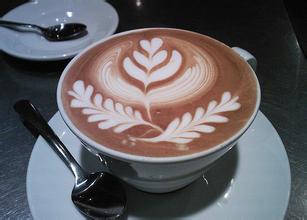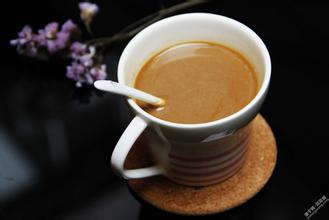Introduction on how to grind Italian espresso beans
Introduction on how to grind Italian espresso beans
In fact, I like this kind of coffee the least. It has no taste at all. It's all bubbles.
Espresso (Espresso) or espresso is a type of coffee with a strong taste by brewing coffee with extremely hot but non-boiling hot water under high pressure and grinding it into a very fine coffee powder. It was invented and developed in Italy and began in the early 20th century, but until the mid-1940s, it was a drink made separately through vapor pressure. After the invention and successful commercialization of the Spring Lever (spring piston lever) coffee machine, espresso was transformed into a drink known today. The pressure used in the production process is often 9 to 10 atmospheric pressure or bar pressure.
By definition, espresso has a thicker texture than dripping coffee and contains more dissolved matter per unit volume than dripping coffee; supply is usually calculated in terms of "shot". Espresso is chemically complex and changeable, many of which decompose due to oxidation or a drop in temperature. A feature of properly brewed espresso is the presence of coffee fat (crema), a reddish-brown foam that floats on the surface of espresso. It consists of vegetable oils, proteins and sugars. Coffee fat has the combination of emulsion and foam colloid.
Through the short-time and high-pressure brewing process, the unique flavor of a cup of coffee is stronger than other brewing equipment after being concentrated. However, there is less caffeine because of the short quenching time. Espresso is often used as the basis for coffee drinks mixed with other ingredients (such as milk or cocoa), such as lattes, cappuccinos, macchiato and mocha, without over-diluting the coffee.

Important Notice :
前街咖啡 FrontStreet Coffee has moved to new addredd:
FrontStreet Coffee Address: 315,Donghua East Road,GuangZhou
Tel:020 38364473
- Prev

Detailed tutorial introduction to the step diagram of gouache proportion of hand-brewed coffee
It is worth noting that the habit of hand brewing in Taiwan is different from that in Japan, where one cup or one person is about 120ml or 130ml, but Taiwan feels too stingy. The average store will soak 150ml ~ 180ml, coffee players are more atmospheric, one person will probably reach two cups of 240ml ~ 260ml. In other words, Taiwan
- Next

Cappuccino cup size-how big is the fancy coffee cup?
Cappuccino cup size-what is the size of a fancy coffee cup? when choosing a cup, many people are often unable to correctly distinguish between a coffee cup and a black tea cup. Usually, in order to spread the aroma of black tea and appreciate the color of black tea, the bottom of the cup is lighter, the mouth is wider, and the light transmittance is higher, while the coffee cup has a narrower mouth, thicker material and low light transmittance. Coffee
Related
- Beginners will see the "Coffee pull flower" guide!
- What is the difference between ice blog purified milk and ordinary milk coffee?
- Why is the Philippines the largest producer of crops in Liberia?
- For coffee extraction, should the fine powder be retained?
- How does extracted espresso fill pressed powder? How much strength does it take to press the powder?
- How to make jasmine cold extract coffee? Is the jasmine + latte good?
- Will this little toy really make the coffee taste better? How does Lily Drip affect coffee extraction?
- Will the action of slapping the filter cup also affect coffee extraction?
- What's the difference between powder-to-water ratio and powder-to-liquid ratio?
- What is the Ethiopian local species? What does it have to do with Heirloom native species?

